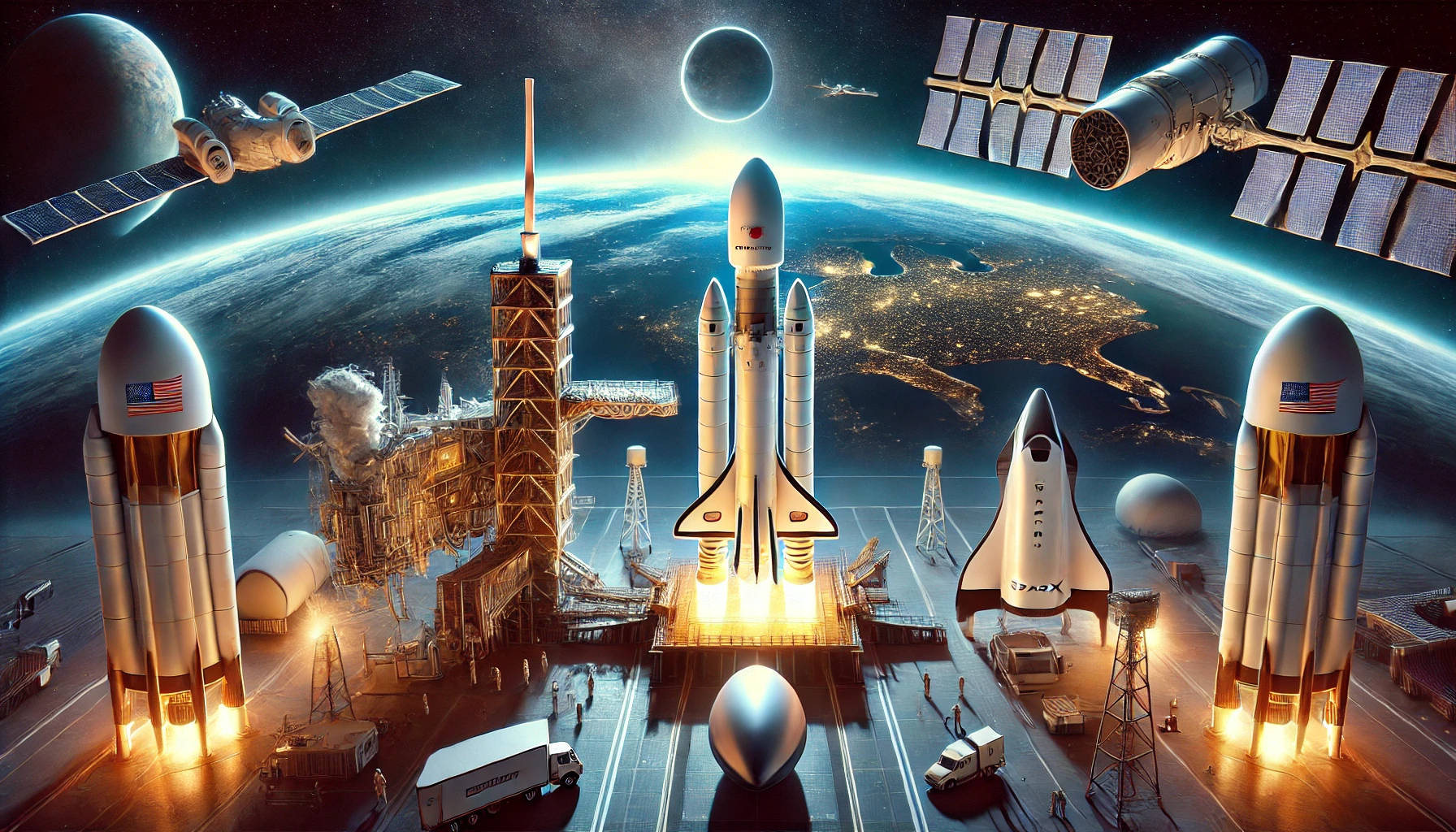NASA vs. SpaceX : Who Is More Advanced in Space Exploration?
The debate over whether NASA or SpaceX is more advanced in space exploration has been gaining momentum as both entities continue to push the boundaries of human and robotic space travel. While NASA has been the cornerstone of space exploration for over six decades, SpaceX has revolutionized the industry with its rapid technological advancements and ambitious goals. This article will compare their achievements, technological capabilities, and future prospects to determine who stands at the forefront of space exploration.
Historical Background
NASA, the National Aeronautics and Space Administration, was established in 1958 and has since been responsible for some of the most significant milestones in space history. From the Apollo moon landings to the Mars rovers, NASA has continuously expanded our understanding of the universe. The agency’s major achievements include the Space Shuttle program, the International Space Station (ISS), and the ongoing Artemis program, which aims to return humans to the Moon and establish a long-term presence there.
On the other hand, SpaceX, founded in 2002 by Elon Musk, was created with the vision of making space travel more affordable and eventually colonizing Mars. In a relatively short period, the company has achieved what many thought was impossible: reusable rockets, private astronaut missions, and cost-effective launch solutions. SpaceX’s Falcon 9 and Falcon Heavy rockets have become the backbone of commercial space travel, and the ambitious Starship project aims to revolutionize interplanetary travel.
Technological Advancements
Rocket Technology
NASA has developed some of the most powerful rockets in history, including the Saturn V, which carried astronauts to the Moon. More recently, the Space Launch System (SLS) has been designed to support deep-space missions. However, the high costs and slow development of SLS have raised concerns about its sustainability.
SpaceX, in contrast, has made significant advancements in rocket reusability. The Falcon 9 and Falcon Heavy rockets can land and be reused multiple times, drastically reducing the cost of space travel. SpaceX’s next-generation Starship, which is currently in the testing phase, is designed to be fully reusable and capable of carrying up to 100 passengers to Mars.
Human Spaceflight
NASA has extensive experience in human spaceflight, from the Apollo missions to the ISS. The agency’s upcoming Artemis missions will take astronauts back to the Moon and serve as a stepping stone for Mars exploration.
SpaceX, however, has taken a more commercial approach. The Crew Dragon spacecraft, developed under NASA’s Commercial Crew Program, has successfully transported astronauts to the ISS, proving that private companies can handle human spaceflight. With ambitions to send civilians and even tourists to space, SpaceX is making space travel more accessible than ever before.
Cost and Efficiency
One of the major differences between NASA and SpaceX is their approach to cost and efficiency. NASA, being a government agency, operates with a large budget but also faces bureaucratic constraints and long development timelines. The SLS program, for instance, has faced multiple delays and cost overruns.
SpaceX operates like a private company, prioritizing cost-cutting and efficiency. By developing reusable rockets, it has managed to reduce launch costs significantly. A Falcon 9 launch costs around $67 million, while the SLS is estimated to cost over $2 billion per launch. This drastic difference gives SpaceX a clear advantage in terms of cost-effectiveness.
Mars Exploration: The Ultimate Goal
Both NASA and SpaceX have their eyes set on Mars, but their approaches differ. NASA’s Mars missions, including the Perseverance rover and plans for a future crewed mission, rely on traditional government funding and international collaboration.
SpaceX, however, has an ambitious timeline for colonizing Mars. Elon Musk’s vision includes launching Starship missions to the Red Planet within the next decade, with the ultimate goal of establishing a self-sustaining human colony. If SpaceX succeeds in this endeavor, it will mark a historic shift in space exploration, making interplanetary travel a reality.
Collaboration vs. Competition
Despite their differences, NASA and SpaceX often collaborate. NASA has contracted SpaceX for cargo and crew missions to the ISS, and SpaceX’s technology has helped NASA achieve its goals more efficiently. However, SpaceX’s growing independence raises the question of whether private companies might eventually surpass government agencies in space exploration.
Conclusion: Who Is More Advanced?
Determining who is more advanced between NASA and SpaceX depends on the criteria used for evaluation. NASA has the historical legacy, experience, and scientific expertise that no private company can match. However, SpaceX is rapidly innovating, reducing costs, and pushing the boundaries of what is possible in space travel.
If the measure of advancement is cost-efficiency, innovation, and speed of development, SpaceX holds the edge. If experience, reliability, and a long history of successful missions are the criteria, then NASA remains the leader. Ultimately, both organizations play crucial roles in shaping the future of space exploration, and their combined efforts may be the key to unlocking humanity’s potential beyond Earth.

